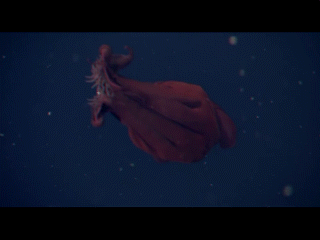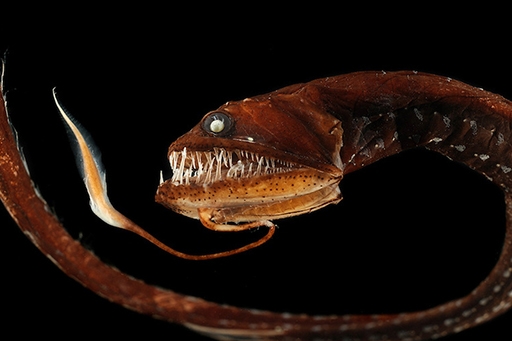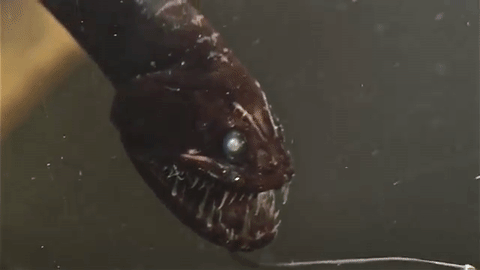5. Barreleye

Image via YouTube
With a transparent head and odd, barrel-shaped eyes, this looks more like a submarine than a fish. Like hatchetfish, their eyes generally face upward, allowing them to search for prey above them as they float motionlessly in the water – but they can rotate them forward as necessary.
Check out the video for more info:
4. Stargazer

Image via Wikimedia Commons
These bad boys take their food seriously. They hunt by burying themselves in sand and pouncing on unsuspecting prey as they swim by.
And in the case that they don’t succeed on the first try, they’ve got other tricks up their sleeves. Stargazers are both poisonous and capable of delivering lethal electric shocks.
3. Vampire squid

Its scientific name is Vampyroteuthis infernalis, which translates to “vampire squid from hell,” but that’s the scariest thing about this bizarre creature. Neither a vampire or a squid, this ancient species of cephalod has been around forever and is considered a living fossil. They live at depths of about 2,000-4,000 feet, where oxygen levels are extremely low and most other animals can’t survive. But vampire squids don’t need oxygen — they don’t really have many predators and they don’t expend a lot of energy hunting prey. Instead, they feed on marine snow, which consists of dead matter and feces that drop down from the top of the ocean.
Watch this video for more:
2. Sea Pig

Sea pigs are a group of deep-sea echinoderms with enlarged tube feet — they use water cavities in the skin to inflate and deflate the appendages.
These unusual creatures grow to approximately 6 inches in length and are generally found anywhere from 4,000 to 16,000 feet below the ocean’s surface. You can find them in the Atlantic, Pacific, and Indian oceans feeding on organic particles from deep-sea mud.
1. Dragonfish

The deep sea dragonfish (or viper fish) are unreal creatures that thrive 2000 feet below the surface. Also called the scaleless dragonfish, these guys are ferocious predators, with extremely large teeth relative to their body size.
There are several different species of dragonfish (some researchers estimate 67 species, all from the fish family known as Family Stomidae). They’re quite difficult to tell apart, but this one is likely Tactostoma macropus, the longfin dragonfish.
Unfortunately, fish like this do not survive long on the surface due to temperature differences and mechanical damage sustained in nets.





